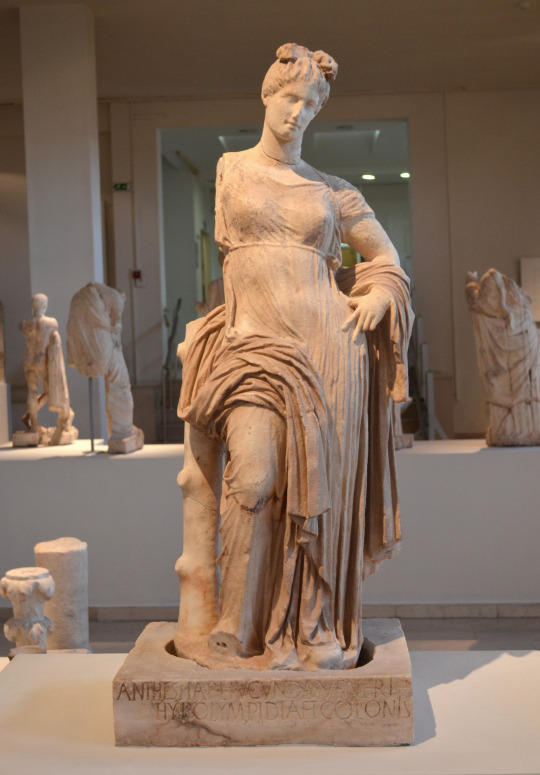
Archaeological Museum of Dion:
Statuettes of Harpocrates, the companion of Isis. (2nd century A.D). From the sanctuary of Isis.
A replica of the left statuette, at the location it was found, at the sanctuary of Isis.


Archaeological Museum of Dion:
Statuettes of Harpocrates, the companion of Isis. (2nd century A.D). From the sanctuary of Isis.
A replica of the left statuette, at the location it was found, at the sanctuary of Isis.


Archaeological Museum of Dion:
Statue to Isis Tyche, and other votives, including one devoted to Isis Lochia (protector of women who gave birth). From the sanctuary of Isis.

Archaeological Museum of Dion:
Votive relief depicting Aphrodite riding a goat, from the sanctuary of Isis, a votive to the statue of Aphrodite Hypolimpidia.

Archaeological Museum of Dion:
A votive relief with a depiction of Isis from the sanctuary of Isis, embedded on the facade of the temple.

Archaeological Museum of Dion:
Head of Demeter, from the sanctuary of Demeter (4th century B.C)
Archaeological Museum of Dion:
Cult statues of Hera and Zeus (Roman Imperial times). The statue of Hera was found built in the Early Christian walls*. From the sanctuary of Zeus Hypsistos.
*Statues, reliefs, funerary monuments have been found multiple times in the walls of cities. Most of them were placed there from the 3rd to the 5th century AD, after a series of invasions in Greek space, an event that caused a profound need for new fortifications and readily available building materials. In some cases, like in that of the painted funerary stelai of Demetrias, this helped preserve the antiquities. From the 4th to the 7th century AD Christianity, now endorsed by the newly formed Byzantine Empire began to really take hold in Greece, hostilities against the old religion and its believers have been documented, but the use of these statues as building materials was not exactly an act of vandalism. A lot of artifacts had already been damaged, and old sanctuaries had already fallen to disrepair due to earthquakes, floods, invasions, or plagues.

Archaeological Site of Dion:
From the sanctuary of Isis, a view to the statue(replica) of Aphrodite Hypolympidia*. The actual statue is housed in the museum. I can’t read the inscription very well, but it seems the first word is the name Anthestia, she and her daughter were major sponsors of the sanctuary.
Aphrodite of the foot of the mountain (Olympus)

Archaeological Site of Dion:
More pictures from the sanctuary of Isis. The visitor actually enters it from the sides.
Archaeological Site of Dion:
Some more pictures from the sanctuary of Isis. The temple of Demeter also has many votive statues. Judging from the votive statues in other sanctuaries, these could be in the likeness of adorants, priestesses, family members of people who were helped or healed by the sanctuary, and sponsors. The last statue depicts Isis Tyche, in the same room, a sacred spring was also housed.
Artemis was previously worshipped at the sanctuary and towards its destruction in the 4th century A.D, it seems that Christ and Isis were worshiped together there. The sanctuary was destroyed by a series of earthquakes and floods. This series of natural disasters might have also destroyed Dion’s oldest christian basilica.
Archaeological Site of Dion:
Some more of the mosaics from the Great Baths of Dion. The complex of the Baths was built circa 200 AD. About ten Bath complexes have been found on the site of Dion but the Great Baths surpass them in size and ornamentation. The complex seems to have been part of a wider public and administrative building program.